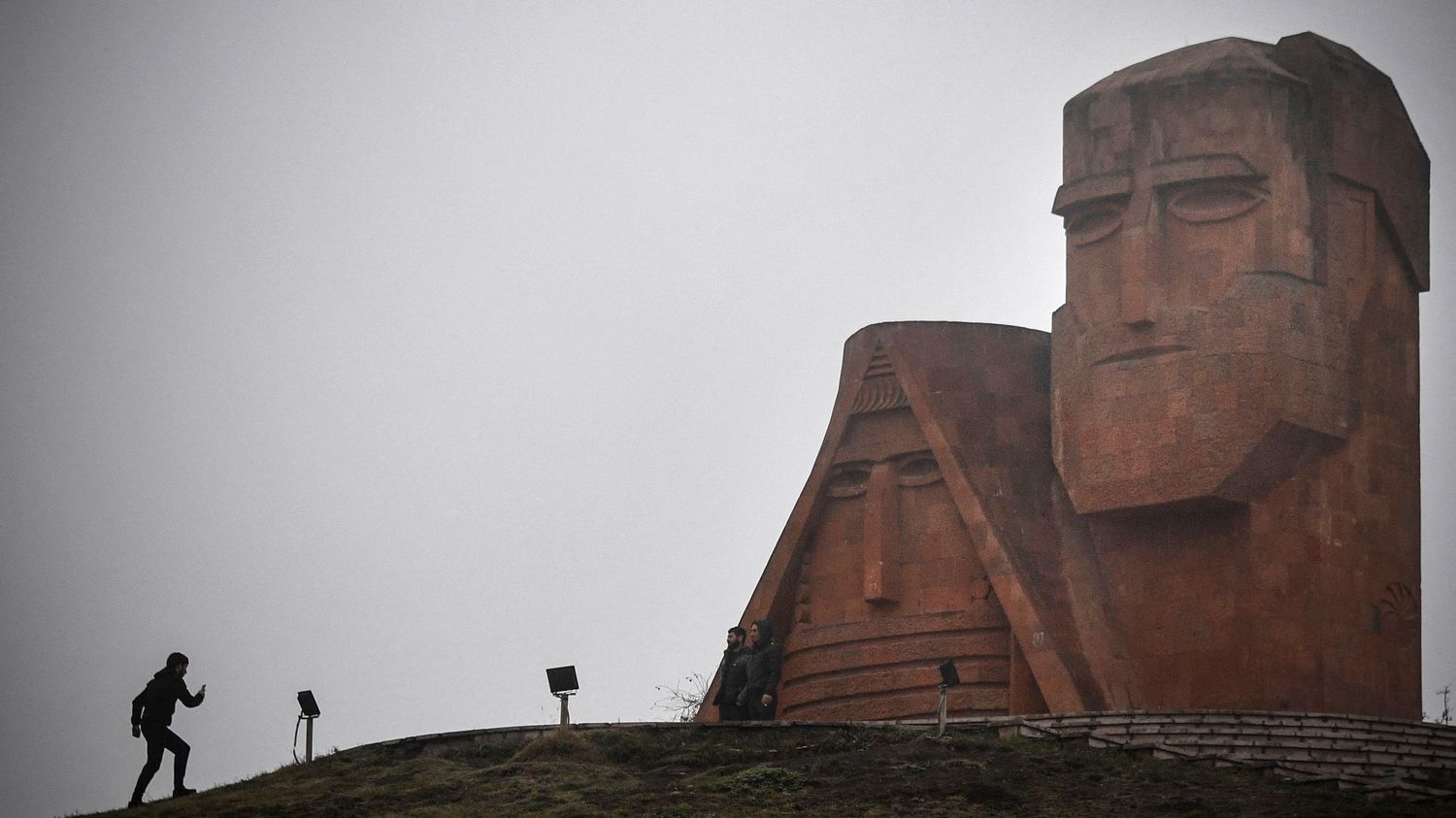The self-proclaimed Republic of Nagorno-Karabakh is emptied of a large part of its population. With its announced dissolution, a part of the cultural heritage of this Caucasian territory risks disappearing.
Emptied of a large part of its population, the self-proclaimed Republic of Nagorno-Karabakh risks disappearing with a part of the cultural heritage considered ancestral by the Armenians. After a lightning offensive by Azerbaijani forces in September, almost the entire Armenian population fled the Nagorno-Karabakh republic for Armenia.
Several hundred churches, monasteries and tombstones dating from the 11th to 19th centuries dot this mountainous enclave which has been an integral part of Azerbaijan since the end of the Russian Empire, but which unilaterally proclaimed its independence in 1991 after the collapse of the Soviet Union.
“Armenian symbolic places”
Some have specific features, such as flat-bottomed apses or armed horsemen dating from the Mongol period (13th-14th century) represented on certain khatchars (sculpted stone crosses), explains Patrick Donabédian, emeritus researcher at the Medieval Archeology Laboratory and Modern in the Mediterranean (LA3M).
With the exodus, and the departure in particular of the priests from the Dadivank monastery supposedly founded in the early days of Christianity by Saint Dadi, uncertainty weighs on this heritage. “Nothing will happen to these symbolic Armenian places other than what happened elsewhere” in Azerbaijan and in the areas reconquered by Baku after the 2020 war, estimates Hovhannes Guévorkian, the representative of Nagorno-Karabakh in France.

In Baku, the Saint Gregory Church, which is listed in the national register of historical monuments of Azerbaijan, is closed to the public, its perimeter gates locked and one of its entrances blocked by the extension of the terrace of a restaurant.
From Gandja to Terter, in these western towns located at the gates of the enclave disputed for decades, a veil of amnesia seems to have covered any Armenian presence. And in Nagorno-Karabakh, the Saint-Savior Cathedral of Choucha – a city considered by Baku as its cultural capital, remains frozen in a straitjacket of scaffolding. Elsewhere, tarpaulins cover Armenian monuments.
Risks of degradation
With the capitulation of the separatists, “the risks are multiple“, ranging from damage to destruction or erasure of inscriptions”as part of an appropriation” of history, and particularly threaten historic cemeteries and churches in small villages, estimates Lori Khatchadourian, archaeologist at Cornell University in the United States.
She is the co-founder of Caucasus Heritage Watch, a project that uses satellite imagery to document Armenian heritage in Nagorno-Karabakh and the Azerbaijani region of Nakhchivan, near the border with Iran.

108 medieval and modern Armenian monasteries, churches and cemeteries were completely destroyed between 1997 and 2011, according to researchers, and at the site of Jougha “the destruction happened over a decade, not overnight“, assures Lori Khatchadourian who evokes a process”slow and steady“.
Data that cannot be verified on the ground because access is prohibited or strictly regulated by the Azerbaijani authorities. The latter, for their part, denounce the desecration or degradation of mosques and Muslim sites which were under Armenian control.
Intangible heritage “inevitably in danger”
The fate of Armenian heritage is all the more in question as nearly 700,000 Azerbaijanis who were uprooted during the conflict of the 1990s can now claim to return to Nagorno-Karabakh. President Ilham Aliyev has repeatedly suggested in recent years that Armenians have no historical claim to the region, saying that “mosques and churches are our historical treasures“.
The international court recalled in December 2021 in Baku its obligations in relation to the international convention on the elimination of all forms of racial discrimination. Asked by AFP about these questions, the Azerbaijani Ministry of Culture did not immediately respond.
Since its lightning military victory on September 20 in Karabakh, Baku has ensured that it guarantees equal rights and freedoms.regardless of ethnic, religious or linguistic affiliation” of those who would remain.
Beyond architecture, it is the intangible heritage which is also “inevitably in danger“, fears Hovhannes Guévorkian. Dances, songs and folklore but also the dialects of Nagorno-Karabakh”will be threatened with extinction over time” because the “natural guardians of these places of culture and tradition“who pass them on from generation to generation, once separated, will perhaps still pass on to the next generation, but after?“
